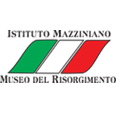Museum of Risorgimento
Inaugurated on 5 May 1915 in Palazzo Bianco, it has since 1934 been located in the birthplace of Giuseppe Mazzini. It preserves and exhibits a rich historical and artistic heritage through which the symbolic figures of Risorgimento are brought to life: Giuseppe Mazzini and the republican and democratic movement; Giuseppe Garibaldi and the Red Shirts; Goffredo Mameli and the Italian Anthem.
The exhibition traces the historical events that led to the unification of Italy, from the Genoese anti-Austrian revolt in 1746 to the inauguration of the Monument to the Thousand of Quarto in 1915.
The substantial historical, artistic and documentary heritage preserved in the institute was created through donations and purchases as early as the nineteenth century. Paintings, prints, posters, sculptures, documents, photographs, uniforms, weapons, flags and relics cover a time span that goes beyond the strict chronology of the Risorgimento, and includes items from the 18th century to the Second World War and the Liberation.
Top Ten
Among the most significant works of the nineteenth century are the portraits of Goffredo Mameli, Giuseppe Mazzini and Giuseppe Garibaldi, respectively painted by Domenico Induno, Emilie Ashurst, Gacinto Gallino. Also famous is the canvas by the Dutch painter Peter Tetar Van Elven with the faithful depiction of the departure of the Thousand from the rock of Quarto, which is flanked by the works of Plinio Nomellini created for the inauguration of the Monument to the Thousand (May 5, 1915), and the sketch by the sculptor Eugenio Baroni, winner of the national competition.
Highly evocative objects include the Red Shirts and the precious Flag of the Thousand in silk (1860) as well as Mazzini's guitar, always with him in his long London exile, which is still played today on special occasions.
Among the documents, a prominent place belongs to the first autographed draft of the Canto degli Italiani by Goffredo Mameli (1847) and to the Act of Surrender of the German troops signed in Genoa on 25 April 1945.







Follow us on Facebook
Follow us on Tripadvisor